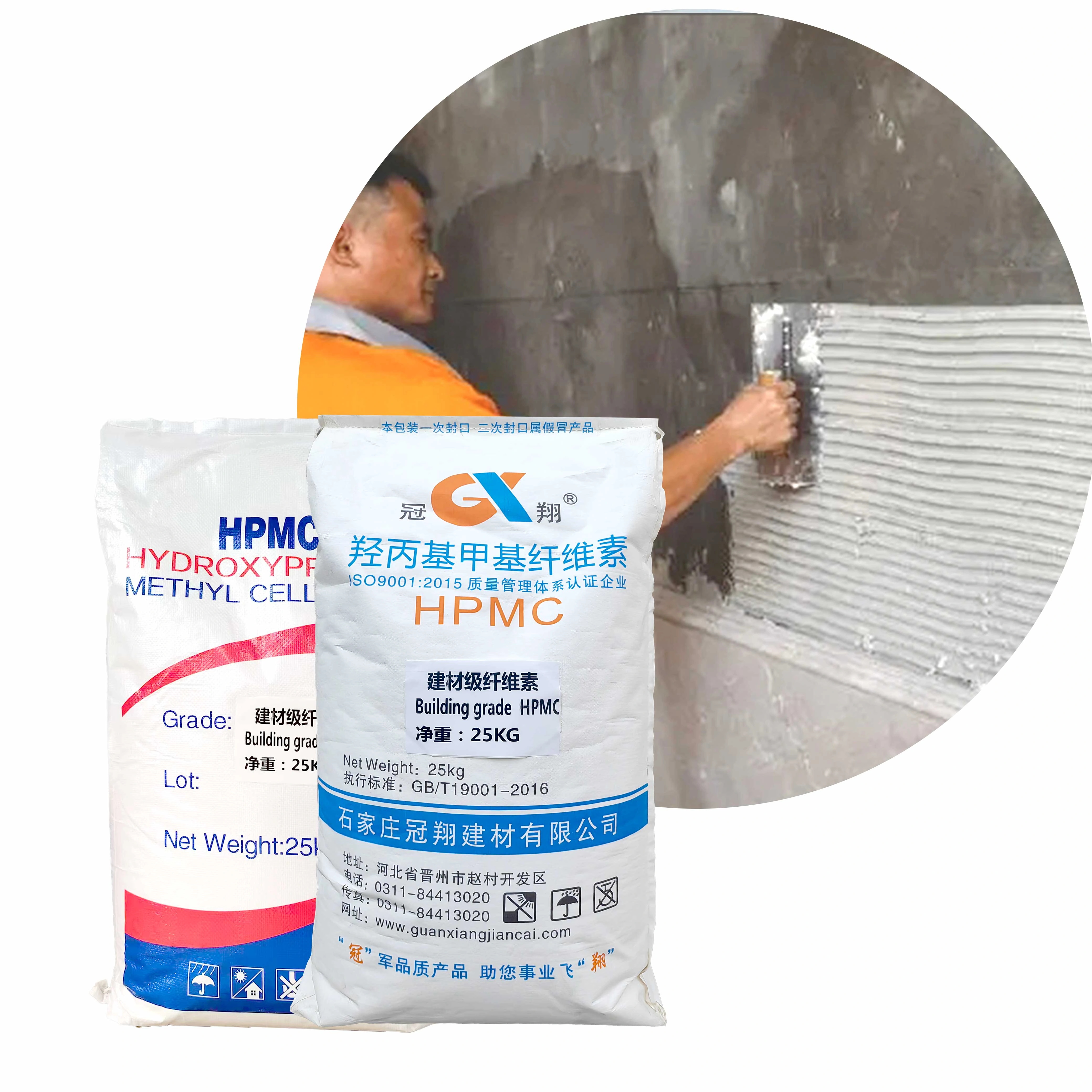ປະລິມານ methoxy ມີບົດບາດສໍາຄັນໃນການ ກໍາ ນົດອຸນຫະພູມການຈາງຂອງ HPMC. ລະດັບ methoxy ສູງຂື້ນເພີ່ມການໂຕ້ຕອບ hydrophobic, ເຊິ່ງຫຼຸດຜ່ອນອຸນຫະພູມທີ່ເກີດການຈີເລດ. ກຸ່ມ methoxy ເຫຼົ່ານີ້ສົ່ງຜົນກະທົບຕໍ່ຄວາມລະລາຍແລະພຶດຕິ ກໍາ ໂມເລກຸນ, ເຮັດໃຫ້ພວກມັນມີຄວາມ ຈໍາ ເປັນໃນການຄວບຄຸມຄຸນສົມບັດຄວາມຮ້ອນຂອງ HPMC. ຄວາມເຂົ້າໃຈນີ້ຊ່ວຍໃຫ້ອຸດສາຫະ ກໍາ ສາມາດປັບປຸງ HPMC ສໍາ ລັບ ຄໍາ ຮ້ອງສະ ຫມັກ ສະເພາະ.
ວິທະຍາສາດ ທີ່ ເຮັດ ໃຫ້ ມີ ອຸນຫະພູມ ແລະ ປະລິມານ ເມໂຕຊີ ໃນ ລະດູ ຫນາວ
ກຸ່ມ methoxy ແລະບົດບາດຂອງພວກເຂົາໃນໂຄງສ້າງເຄມີຂອງ HPMC
ກຸ່ມ methoxy ແມ່ນກຸ່ມທີ່ມີປະສິດຕິພາບປະກອບດ້ວຍກຸ່ມ methyl ທີ່ຕິດກັບອາວຸດອົກຊີເຈນ (-OCH3). ໃນ hydroxypropyl methylcellulose (HPMC), ກຸ່ມເຫຼົ່ານີ້ໄດ້ທົດແທນກຸ່ມ hydroxyl ບາງສ່ວນໃນກະດູກສັນຫຼັງຂອງ cellulose. ການທົດແທນນີ້ປ່ຽນແປງໂຄງສ້າງເຄມີແລະຄຸນສົມບັດຂອງ HPMC. ກຸ່ມ methoxy ເພີ່ມ hydrophobicity ຂອງ polymer ເຮັດໃຫ້ມັນບໍ່ລະລາຍໃນນ້ ໍາ ໃນອຸນຫະພູມສູງກວ່າ. ການປ່ຽນແປງໂຄງສ້າງນີ້ມີບົດບາດ ສໍາ ຄັນໃນການ ກໍາ ນົດວິທີການ HPMC ປະພຶດໃນລະຫວ່າງການຈອດ. ການມີກຸ່ມ methoxy ມີຜົນກະທົບໂດຍກົງຕໍ່ຄວາມສາມາດຂອງ polymer ໃນການສ້າງ gel ພາຍໃຕ້ສະພາບຄວາມຮ້ອນສະເພາະ.
Hydrophobicity ແລະ solubility: ປັດໄຈສໍາຄັນໃນການປະພຶດ gelation
Hydrophobicity ແລະຄວາມລະລາຍແມ່ນປັດໃຈທີ່ ສໍາ ຄັນທີ່ສົ່ງຜົນກະທົບຕໍ່ພຶດຕິ ກໍາ ຂອງ HPMC. ກຸ່ມ methoxy ເພີ່ມທະວີການໂຕ້ຕອບ hydrophobic ພາຍໃນຕ່ອງໂສ້ polymer. ໃນຂະນະທີ່ອຸນຫະພູມເພີ່ມຂຶ້ນ, ການໂຕ້ຕອບເຫຼົ່ານີ້ຈະແຂງແຮງຂຶ້ນ, ເຮັດໃຫ້ໂພລີເມີລວມຕົວແລະສ້າງເປັນ gel. ໃນເວລາດຽວກັນ, ຄວາມລະລາຍຂອງ HPMC ຫຼຸດລົງຍ້ອນຄວາມເຄັ່ງຄັດຂອງພາກພື້ນທີ່ອຸດົມສົມບູນກັບ methoxy ທີ່ຫຼຸດລົງກັບນ້ ໍາ. ຄວາມສົມດຸນລະຫວ່າງ hydrophobicity ແລະ solubility ນີ້ ກໍາ ນົດອຸນຫະພູມການຈຸ່ມຂອງ HPMC. ປະລິມານ methoxy ທີ່ສູງກວ່າພາໃຫ້ມີການໂຕ້ຕອບ hydrophobic ທີ່ແຂງແຮງກວ່າ, ເຊິ່ງເຮັດໃຫ້ອຸນຫະພູມທີ່ ຈໍາ ເປັນ ສໍາ ລັບການເຮັດຈີເລດຫຼຸດລົງ.
ຄວາມກ່ຽວຂ້ອງທາງກົງກັນຂ້າມລະຫວ່າງເນື້ອໃນ methoxy ແລະອຸນຫະພູມ gelation
ອຸນຫະພູມການຈີເລຊັ່ນຂອງ HPMC ຫຼຸດລົງເມື່ອເນື້ອໃນ methoxy ເພີ່ມຂື້ນ. ຄວາມສໍາພັນທາງກົງກັນຂ້າມນີ້ເກີດຈາກການພົວພັນ hydrophobic ທີ່ເພີ່ມຂື້ນທີ່ເກີດຈາກກຸ່ມ methoxy. ເມື່ອເນື້ອໃນຂອງ methoxy ສູງ, ສາຍໂສມ polymer ຈະລວມກັນງ່າຍຂຶ້ນ, ຕ້ອງການພະລັງງານຄວາມຮ້ອນ ຫນ້ອຍ ເພື່ອສ້າງ gel. ໃນທາງກົງກັນຂ້າມ, ເນື້ອໃນ methoxy ທີ່ຕ່ ໍາ ກວ່າເຮັດໃຫ້ມີການໂຕ້ຕອບ hydrophobic ທີ່ອ່ອນລົງ, ຍົກລະດັບອຸນຫະພູມການຈາງ. ຄວາມສໍາພັນນີ້ຊ່ວຍໃຫ້ຜູ້ຜະລິດປັບເນື້ອໃນ methoxy ເພື່ອບັນລຸອຸນຫະພູມການຈີເລຊັ່ນສະເພາະ, ປັບ HPMC ສໍາ ລັບການ ນໍາ ໃຊ້ທີ່ຫຼາກຫຼາຍ.
ຜົນກະທົບທາງດ້ານຕົວຈິງຂອງອຸນຫະພູມການກ້ອນໃນ HPMC Applications
ການນໍາໃຊ້ຢາ: ການຄວບຄຸມການປ່ອຍຢາແລະການສ້າງແຄບຊູນ
HPMC ອັດຕະພາບສ່ວນໃຫມ່ໃນການປະສົມແປງເຄື່ອງທີ່ຊ້າຍ. ຄວາມຮ້ອນຂອງການເປັນເจັລຂອງมັນໄດ້ຮັບຜົນກະທົບຢ່າງตรงກັບຄວາມເວົ້າຂອງຢາ. ຖ້າໃຊ້ໃນເຄື່ອງທີ່ເປັນເຈັລ, HPMC ກໍ່ຈະເປັນເຈັລເສີມໃນເວລາທີ່ສິ່ງປະກົດກັບນ້ຳ. ເຈັລນີ້ຈຳນວນການຫຼຸ້ນຂອງຢາ, ເປັນການສົ່ງສິ່ງທີ່ເປັນໄປໂດຍສະຫຼຸບ. ເຄື່ອງທີ່ເຮັດຈາກ HPMC ບໍ່ພຽງແຕ່ໄດ້ຮັບຜົນກະທົບຈາກຄວາມຮ້ອນ. ຄວາມຮ້ອນຂອງການເປັນເຈັລທີ່ຕ່ຳກວ່າອັດຕະພາບສ່ວນໃຫ່ງໃນການເປັນເຈັລທີ່ສະຖິຕິການເປັນໄປທີ່ອຸນຫະພູມຂອງຮ່າງກາຍ, ເພີ່ມຄວາມສຳເລັດຂອງຢາ.
ການນໍາໃຊ້ໃນກໍ່ສ້າງ: ຊີມັງແລະ mortar additives
ໃນການກໍ່ສ້າງ, HPMC ເປັນສານເພີ່ມທີ່ ສໍາ ຄັນໃນການປະກອບຊີມັງແລະ mortar. ອຸນຫະພູມການຈຸ່ມຂອງມັນມີອິດທິພົນຕໍ່ການເຮັດວຽກແລະເວລາຕັ້ງ. ໃນອຸນຫະພູມສູງ, HPMC ຊ່ວຍຮັກສານ້ ໍາ ໃນສ່ວນປະສົມ, ປ້ອງກັນການແຫ້ງກ່ອນໄວ. ຄຸນສົມບັດນີ້ຊ່ວຍໃຫ້ຄວາມເຂັ້ມແຂງແລະຄວາມແຂງແຮງຂອງວັດສະດຸທີ່ອີງໃສ່ຊີມັງ. ນອກຈາກນັ້ນ, HPMC ເພີ່ມຄວາມສາມາດໃນການແຜ່ກະຈາຍຂອງ mortar, ເຮັດໃຫ້ມັນງ່າຍກວ່າທີ່ຈະ ນໍາ ໃຊ້.
ບົດບາດຂອງອຸດສາຫະກໍາອາຫານ: ສານສະຖຽນລະພາບແລະສານເຮັດໃຫ້ຫນາ
ອຸດສາຫະກໍາອາຫານແມ່ນອີງໃສ່ HPMC ເປັນຕົວສະຖຽນລະພາບແລະ thickener ໃນຫຼາຍໆ ຜະລິດຕະພັນ . ອຸນຫະພູມການຈຸ່ມຂອງມັນ ກໍາ ນົດພຶດຕິ ກໍາ ຂອງມັນໃນສະພາບແວດລ້ອມຮ້ອນແລະເຢັນ. ໃນຊຸບແລະຊອດ, HPMC ໃຫ້ເນື້ອທີ່ລຽບແລະປ້ອງກັນການແຍກລະຫວ່າງການເຮັດຄວາມຮ້ອນ. ໃນເຄື່ອງປຸງແຕ່ງເຂົ້າ ຫນົມ ມັນຊ່ວຍໃຫ້ຄວາມຊຸ່ມຊື່ນດີຂື້ນ, ເຮັດໃຫ້ອາຍຸການເກັບຮັກສາຍາວນານ. ຄວາມສາມາດໃນການປັບແຕ່ງຄຸນສົມບັດຄວາມຮ້ອນຂອງ HPMC® ຮັບປະກັນຄວາມເຂົ້າກັນໄດ້ກັບເຕັກນິກປຸງແຕ່ງອາຫານທີ່ຫຼາກຫຼາຍ. ຄວາມສາມາດຫຼາຍດ້ານນີ້ເຮັດໃຫ້ມັນເປັນສ່ວນປະກອບທີ່ ຈໍາ ເປັນໃນການຜະລິດອາຫານທີ່ທັນສະ ໄຫມ.
ການດັດແປງເນື້ອໃນ Methoxy ເພື່ອປັບຄວາມຮ້ອນຂອງ gelation
ວິທີການປັບລະດັບຂອງ methoxy ໃນລະຫວ່າງການຜະລິດ
ຜູ້ຜະລິດສາມາດດັດແປງເນື້ອໃນ methoxy ຂອງ HPMC ໃນລະຫວ່າງຂະບວນການຜະລິດຂອງມັນ. ການປັບຕົວນີ້ມັກຈະເກີດຂື້ນໃນໄລຍະການ eterification, ບ່ອນທີ່ cellulose ຕອບໂຕ້ກັບ methyl chloride. ໂດຍການຄວບຄຸມເງື່ອນໄຂການປະຕິກິລິຍາ, ເຊັ່ນອຸນຫະພູມ, ຄວາມກົດດັນ, ແລະຄວາມເຂັ້ມຂຸ້ນຂອງ reagents, ຜູ້ຜະລິດສາມາດຄວບຄຸມລະດັບການທົດແທນໂດຍກຸ່ມ methoxy. ຕົວຢ່າງ, ການເພີ່ມປະລິມານ methyl chloride ເຮັດໃຫ້ມີເນື້ອໃນ methoxy ສູງຂື້ນ. ເຊັ່ນດຽວກັນ, ການປ່ຽນແປງເວລາປະຕິກິລິຍາຊ່ວຍໃຫ້ການປັບປຸງລະດັບການທົດແທນ. ວິທີການເຫຼົ່ານີ້ສະ ຫນອງ ຄວາມຍືດຫຍຸ່ນໃນການສ້າງ HPMC ທີ່ມີຄຸນສົມບັດຄວາມຮ້ອນສະເພາະທີ່ ເຫມາະ ສົມກັບການ ນໍາ ໃຊ້ຕ່າງໆ.
ການສົມດຸນເນື້ອໃນ methoxy ແລະ hydroxypropoxy ສໍາລັບຄຸນສົມບັດທີ່ຕ້ອງການ
Methoxy ແລະ hydroxypropoxy ປະກອບໃນການເຄື່ອນໄຫວຂອງ HPMC, ແຕ່ມັນເຮັດໃນທາງທີ່ຕ່າງກັນ. Methoxy ໄດ້ເພີ່ມຄວາມຫຼາຍປະເພດ, ເຊິ່ງ hydroxypropoxy ໄດ້ເພີ່ມຄວາມແຂວງຂອງນ້ຳ. ການສູ້ສົງລັບສອງສ່ວນນີ້ແມ່ນສຳຄັນສຳລັບການເຮັດໃຫ້ໄດ້ຮັບຄວາມຮ້ອນທີ່ເຮັດໃຫ້ເປັນເຈັນແລະຄຸນລັກສະນະທີ່ຕ້ອງການ. ເປັນຕົ້ນ, ການເພີ່ມຂຶ້ນຂອງ hydroxypropoxy ບໍ່ສາມາດເຮັດໃຫ້ຜົນການເຮັດໃຫ້ methoxy ທີ່ສູງ, ເພີ່ມຄວາມຮ້ອນທີ່ເຮັດໃຫ້ເປັນເຈັນ.
ຕົວຢ່າງສະເພາະຂອງອຸດສາຫະ ກໍາ ຂອງການປະກອບ HPMC ທີ່ ກໍາ ນົດເອງ
ອຸດສາຫະ ກໍາ ມັກຕ້ອງການການຜະລິດ HPMC ທີ່ ເຫມາະ ສົມກັບຄວາມຕ້ອງການສະເພາະຂອງພວກເຂົາ. ໃນຂະແຫນງຢາ, ປະລິມານ methoxy ຕ່ ໍາ ແມ່ນມັກ ສໍາ ລັບການ ນໍາ ໃຊ້ທີ່ຕ້ອງການອຸນຫະພູມການຈີເລຊັ່ນສູງກວ່າ, ເຊັ່ນ: ເມັດປ່ອຍທີ່ຍືນຍົງ. ໃນທາງກົງກັນຂ້າມ, ອຸດສາຫະ ກໍາ ກໍ່ສ້າງໄດ້ຮັບຜົນປະໂຫຍດຈາກ HPMC ທີ່ມີເນື້ອໃນ methoxy ສູງກວ່າ, ເຊິ່ງເພີ່ມການເກັບຮັກສານ້ ໍາ ແລະຄວາມສາມາດໃນການເຮັດວຽກໃນປະສົມຊີມັງ. ໃນອຸດສາຫະກໍາອາຫານ, ການຜະລິດຕາມໃຈມັກຮັບປະກັນຄວາມຫມັ້ນຄົງໃນຜະລິດຕະພັນເຊັ່ນ: ຊໍຊັດແລະເຄື່ອງປຸງແຕ່ງອາຫານ. ຕົວຢ່າງເຫຼົ່ານີ້ເນັ້ນເຖິງຄວາມ ສໍາ ຄັນຂອງການປັບເນື້ອໃນ methoxy ເພື່ອເພີ່ມປະສິດທິພາບ HPMC ສໍາ ລັບການ ນໍາ ໃຊ້ທີ່ຫຼາກຫຼາຍ.
ຄວາມຮ່າງຂອງ Methoxy ອັດຕະພາບໃນການແປງສີຫຍາຍຂອງ HPMC ແລະ ການເຮັດວຽກທັງໝົດ. ຜູ້ຜະລິດຊ່ວຍໃຫ້ມີຄວາມຮູ້ຈັກນີ້ເພື່ອອອກແບບສົນຄ້າທີ່ສົມບູรณະສຳລັບຄວາມຕ້ອງການຂອງອຸດສາຫະກຳ. ຄວາມຮູ້ຈັກກ່ຽວກັບຄວາມສຳພັນນີ້ສ້າງຄວາມປິ່ນປ້ອງແລະເພີ່ມຄວາມມີຄວາມສຳເລັດຂອງສິນຄ້າ. ບັນຫານີ້ຍັງເປັນຄວາມກ້າວໜ້າໃນການຄົ້ນຄວ້າ, ເນື່ອງຈາກ HPMC ໄດ້ຖືກເອົາໃຊ້ໃນການປະການທີ່ຫຼາຍໆ.
 EN
EN
 AR
AR
 CS
CS
 DA
DA
 NL
NL
 FI
FI
 FR
FR
 DE
DE
 EL
EL
 HI
HI
 IT
IT
 JA
JA
 KO
KO
 NO
NO
 PL
PL
 PT
PT
 RO
RO
 RU
RU
 ES
ES
 SV
SV
 IW
IW
 ID
ID
 SR
SR
 SK
SK
 UK
UK
 VI
VI
 HU
HU
 TH
TH
 TR
TR
 AF
AF
 MS
MS
 CY
CY
 IS
IS
 BN
BN
 LO
LO
 LA
LA
 NE
NE
 MY
MY
 KK
KK
 UZ
UZ


